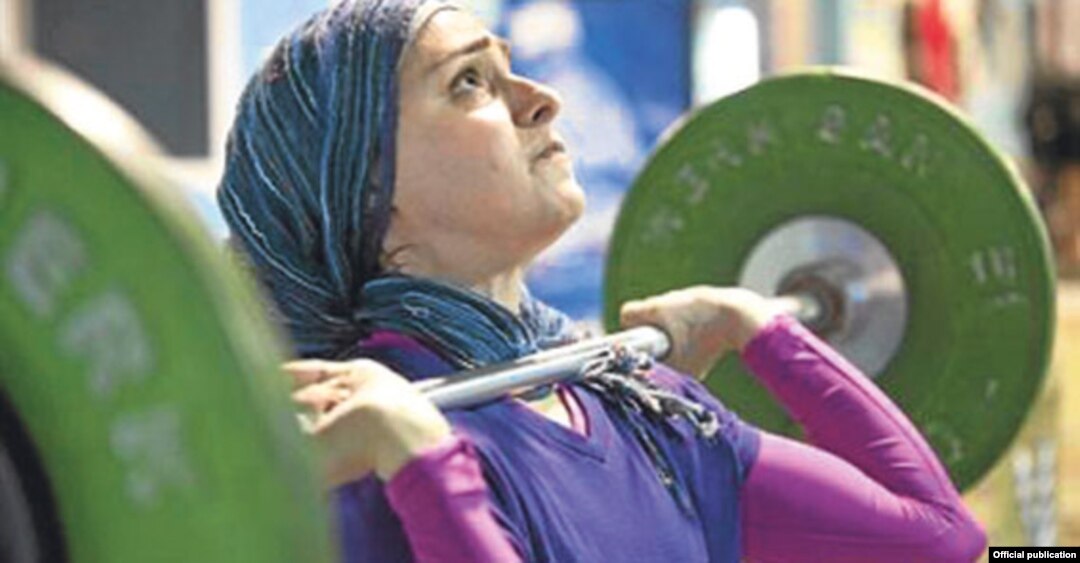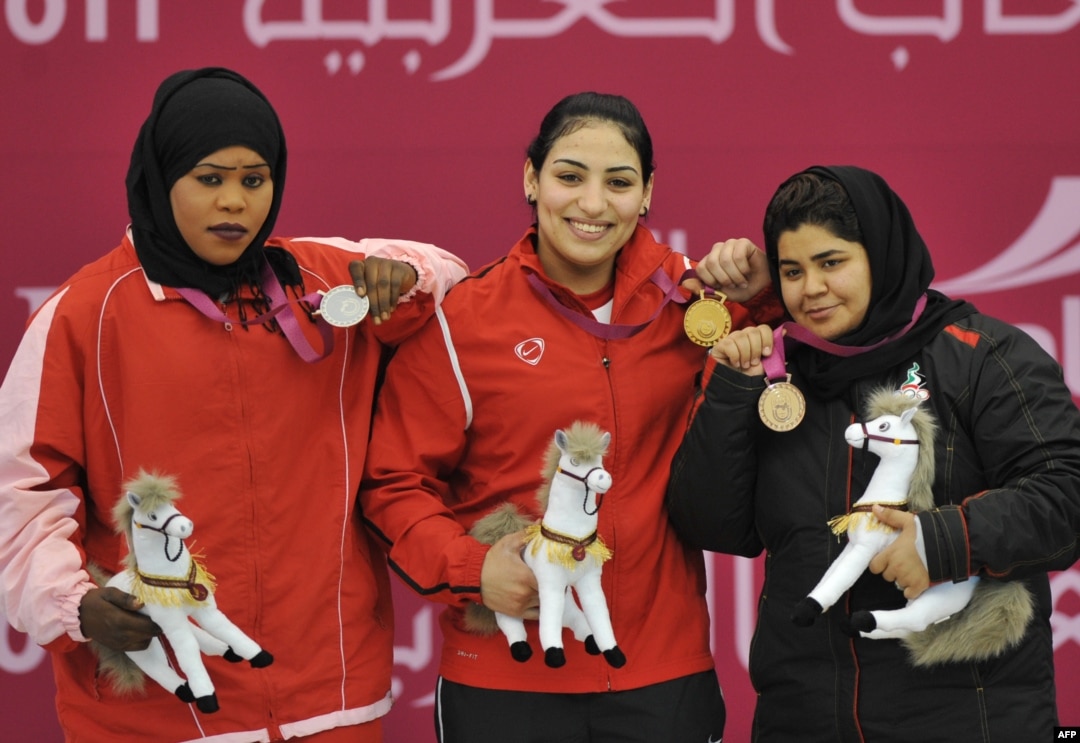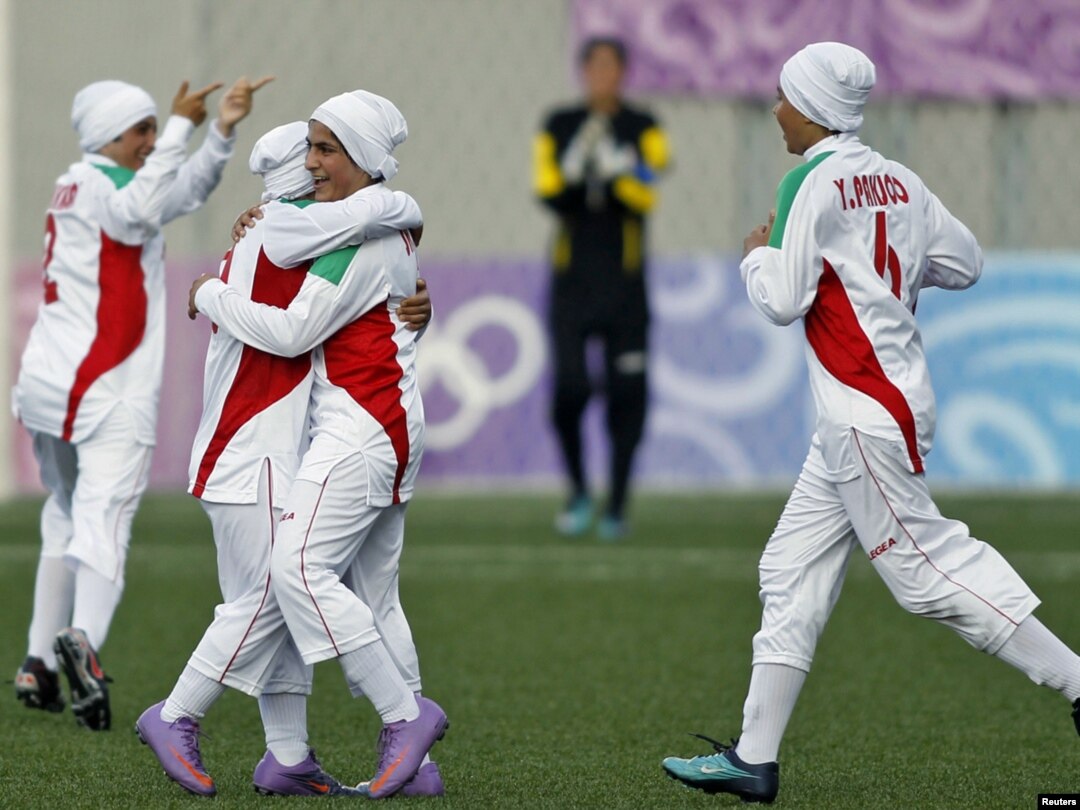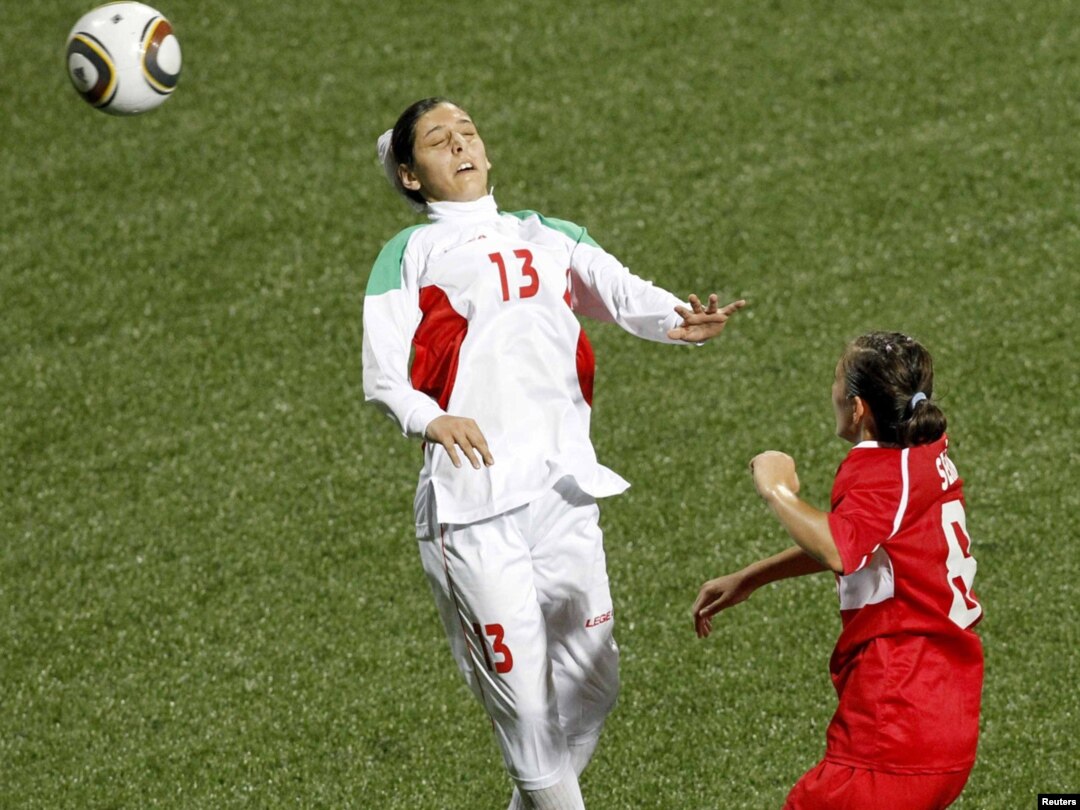Muslim Women Athletes And The Hijab

Kulsoom Abdullah, a Pakistani-American who competes for Pakistan, challenged the International Weightlifting Federation's rules to allow her to compete in U.S. national competitions.

The United Arab Emirates' Yasmin Abbas (right) celebrates her bronze medal in weightlifting in Qatar in December. The UAE has been cleared to send a team to the London Olympics, the first team to compete in Islamic dress.

Players of Iran's girls' soccer team were only allowed to play in the Singapore Youth Olympics in August 2010 after reaching a deal to wear special hats instead of head scarves.

Iran's Fatemeh Shirafkannejad loses her head covering after she heads a ball during a match against Turkey at the Singapore Youth Olympic Games.
Iranian women's national soccer team players react after withdrawing from a qualifying match against Jordan for the 2012 London Olympic Games in Amman in June 2011 over FIFA's rules on head coverings.
Australian soccer player Assmaah Helal wears a hijab during a training session in Sydney in February. Soccer's rules panel says it wants to approve headscarves, but has yet to find a "safe" design.
Afghan distance runner Mahbooba Ahadyar trains at Kabul Olympic Stadium in March 2008, one of only three athletes to compete for the country in the Beijing Games that year.
Afghanistan's women's Olympic basketball team plays a game with personnel from ISAF and the U.S. Embassy to mark International Women’s Day in Kabul in March.
Tennis player Arghavan Rezaei, who plays for both Iran and France, trains before the tennis finals at the Fourth Islamic Women's Games at Tehran's Azadi Stadium in September 2005.
The "sport hijab" was created by a young Canadian designer, Elham Seyed Javad, who models it in Montreal in April 2011.

